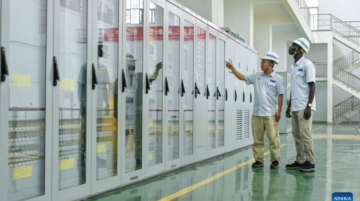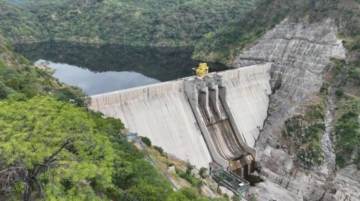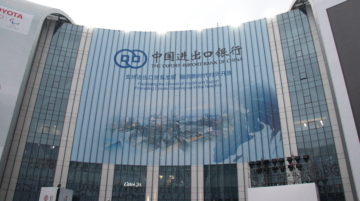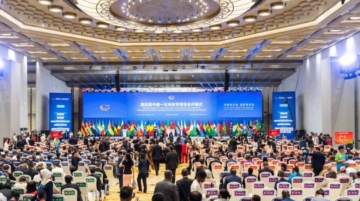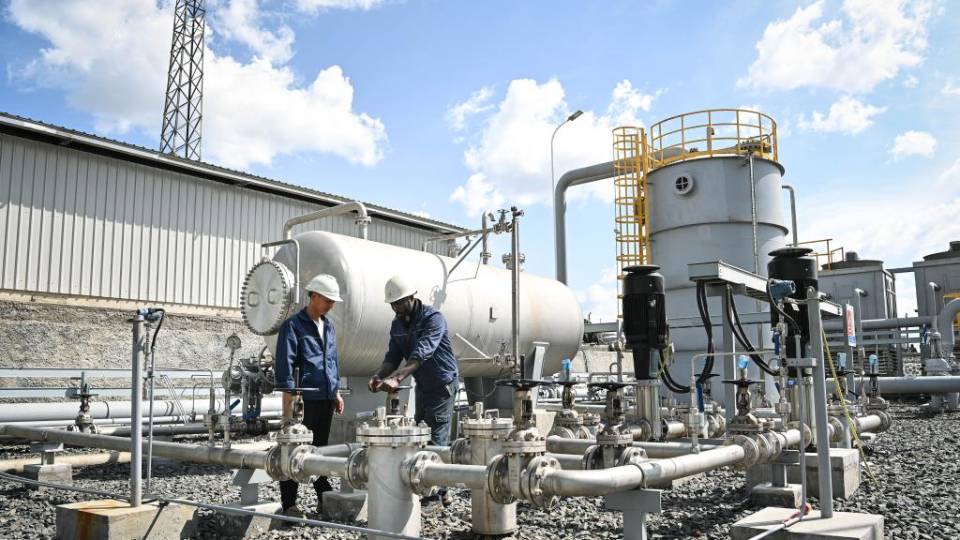
After months, sometimes years, of negotiations, feasibility studies, and financial structuring, shovels hit the ground and concrete is poured. But the final outcome of a power project is not just a function of engineering inputs or Chinese execution.
It also hinges on what happens at home, how the host government monitors, manages, and maintains oversight during implementation.
This edition in the Porcelain Jar at the End of the Rainbow series examines what happens after the finance is secured and the procurement of the contractor is finalized. It explores how African governments exercise agency during the delivery phase of Chinese-supported power projects, and what this means for cost, quality, and timeliness.
While earlier articles focused on financing arrangements, procurement, and the structure of Chinese engagement, this article examines implementation and what shapes results on the ground.
As highlighted in earlier articles, Chinese-supported power generation projects in Africa often follow an EPC+F model. Often, a Chinese contractor designs and builds the plant, while a Chinese policy bank provides the financing. Under this model, the host government remains the project owner.
The contractor is not an investor and does not bear long-term operational risk. This means responsibility for long-term performance and for ensuring the infrastructure is built to standard lies squarely with the state.
Construction is also the riskiest phase of the project cycle. Delays, quality issues, and cost overruns are common risks across the industry. But these risks are amplified when the project owner lacks the technical capacity to supervise works, verify milestones, or challenge poor performance.
The nature of Chinese state-sponsored financing, where funds are often disbursed directly to the contractor based on milestone certifications, can further limit the ability of governments to intervene once construction is underway. In this article, we draw out key lessons that host states should bear in mind when undertaking Chinese state-sponsored projects.
Chinese State-Sponsored Projects: Lessons Learned for African Decision Makers
1. Capacity is Non-Negotiable
One of the clearest lessons from Chinese-supported projects is that the technical capacity of the host state matters. Where host governments deploy skilled engineers and experienced project managers, outcomes tend to be stronger. These professionals can contest poor workmanship, verify progress before payments are made, and ensure compliance with contract terms. Where capacity is thin, whether due to staffing gaps, weak institutions, or poor owner’s engineer support, projects are more likely to suffer from quality issues, delays, or inflated costs.
2. Executive Agency Can Be a Double-Edged Sword
In some cases, high-level political backing helps unblock stalled projects or secure financing. Strong presidential interest can accelerate approvals, signal commitment to Chinese counterparts, and overcome bureaucratic inertia. However, when executive action overrides regulatory processes or sidelines institutional checks, the result can be opaque deals, compromised oversight, or poor value for money. Championing a project is not a substitute for systems that ensure it is delivered properly.
3. Oversight Must Be Continuous, Not One-Off
Exercising agency during negotiations is not enough. Active oversight must continue throughout the life of the project. This includes site supervision, milestone verification and contract enforcement. In some countries in the region, strong initial engagement gave way to hands-off implementation, allowing quality to slip and timelines to stretch. In others, the consistent presence of technical teams, often working alongside EPC contractors, helped projects stay on track.
4. Structure Can Limit Agency
Even where governments want to intervene, they may be constrained by broader structural factors. These include financing arrangements that disburse funds directly to the contractor, limiting leverage; macroeconomic conditions that reduce bargaining power; and institutional silos that disconnect project delivery from broader energy planning.
In some cases, the pressure to secure a project, any project, meant governments accepted terms that later made course correction difficult. Understanding these constraints is key to designing systems that strengthen rather than undermine agency.
5. Ownership Drives Accountability
In state-sponsored projects, the government, not the contractor, owns the asset. That makes it the primary actor responsible for ensuring that the project is worth the investment. Where governments fully embrace this role, staffing projects with technical experts, enforcing performance clauses, and demanding accountability, outcomes improve. Where they delegate too much authority to contractors or assume the project will self-correct, risks escalate.
Across Sub-Saharan Africa, governments are seeking to expand energy access, stabilize supply, and build the infrastructure needed to power development. Chinese-supported power projects have played a central role in this effort. But while Chinese finance and construction capacity can deliver projects at speed and scale, it is the agency of the host state that often determines whether those projects succeed.
International Projects, Domestic Choices
This article, like others in the Porcelain Jar at the End of the Rainbow series, challenges simplified narratives about Chinese infrastructure in Africa. It shows that outcomes are not predetermined by the identity of the financier or the contractor. Instead, they are shaped by the decisions, capabilities, and priorities of African governments at every stage of the project cycle.
As the region moves forward, the focus must not only be on attracting capital or selecting contractors, but on strengthening the institutions and systems that ensure delivery. From capacity building and procurement reform to regulatory oversight and inter-agency coordination, the real lever for success lies within. By investing in these capabilities, governments can ensure that the projects they build today deliver value for decades to come.
As this penultimate article in Part 1 of The Porcelain Jar at the End of the Rainbow draws to a close, one thing is clear: infrastructure outcomes are not merely imported; they are shaped, steered, and sometimes stalled by domestic choices.
The way governments exercise agency during implementation can make or break a project’s success, regardless of the financing source.
In the final article of this first chapter, we turn from individual projects to broader reflections, drawing together the key lessons from this journey through Chinese-backed power generation in Africa, and what they mean for the continent’s infrastructure future.
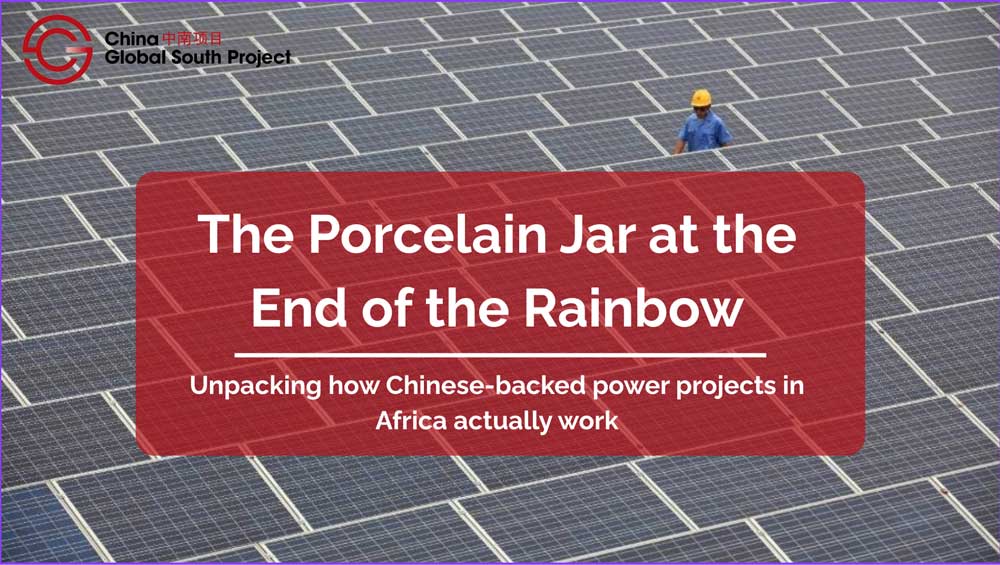
About This Series
This article is part of “The Porcelain Jar at the End of the Rainbow,” a new series from the China Global South Project that unpacks how Chinese-backed power projects in Africa actually work. As global development partners shift and electricity demand rises, understanding China’s role — from financing and procurement to project delivery — has never been more important. Each installment offers practical, field-informed insights for policymakers, developers, and researchers navigating complex infrastructure environments.
The series is complemented by CGSP’s interactive Energy Tracker, a tool that maps Chinese-supported power generation projects across Africa, including data on capacity, financing, ownership, and implementation status.




